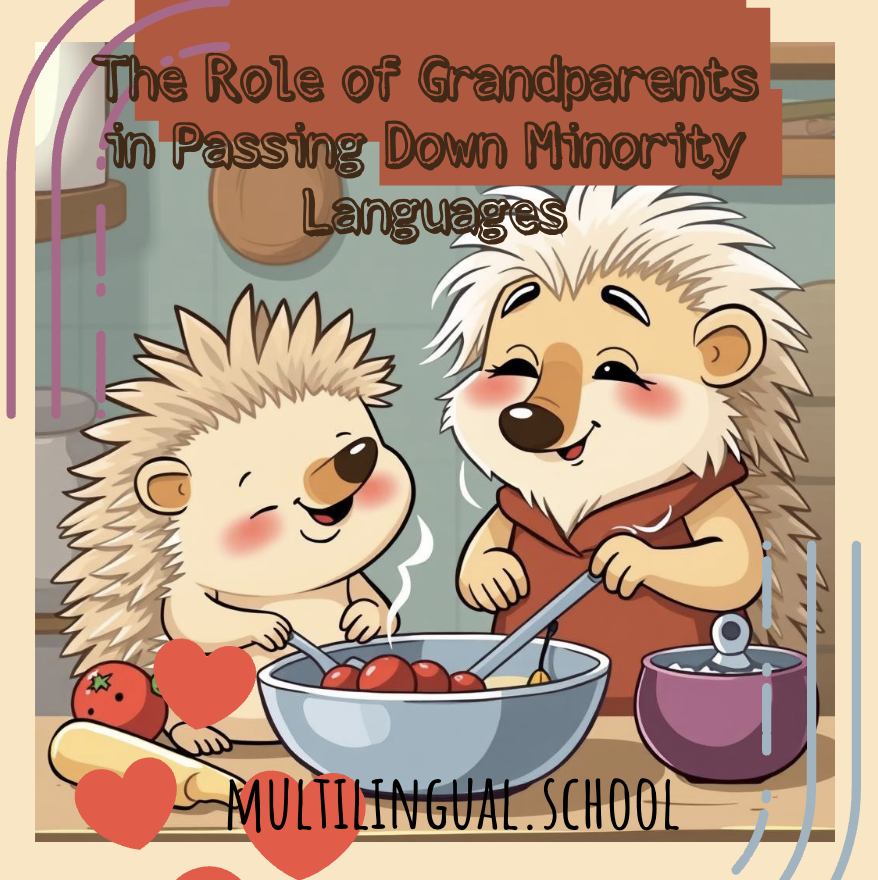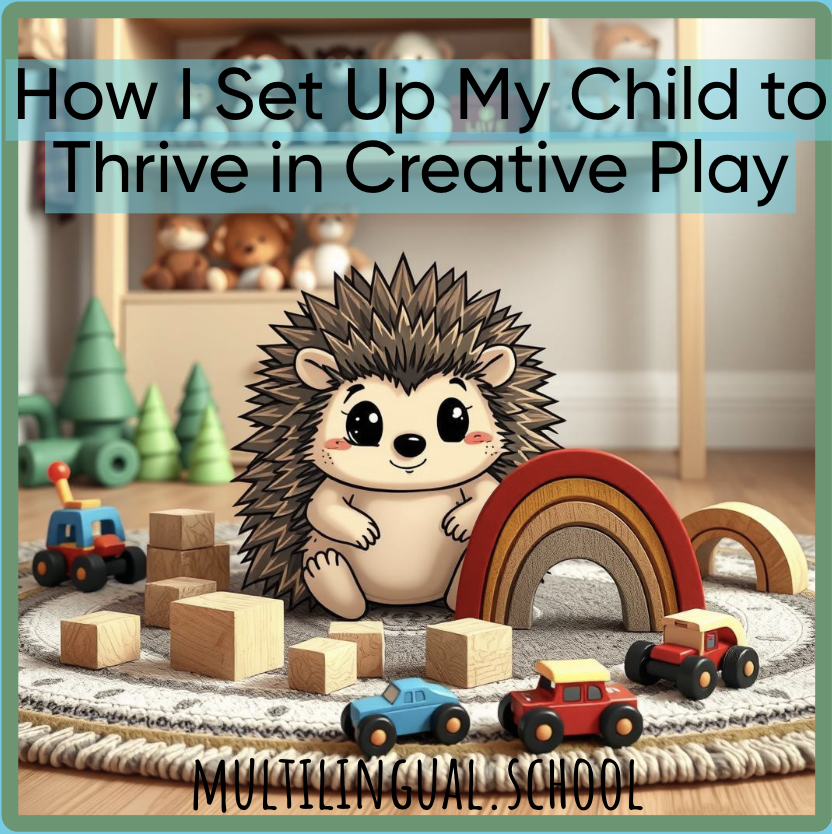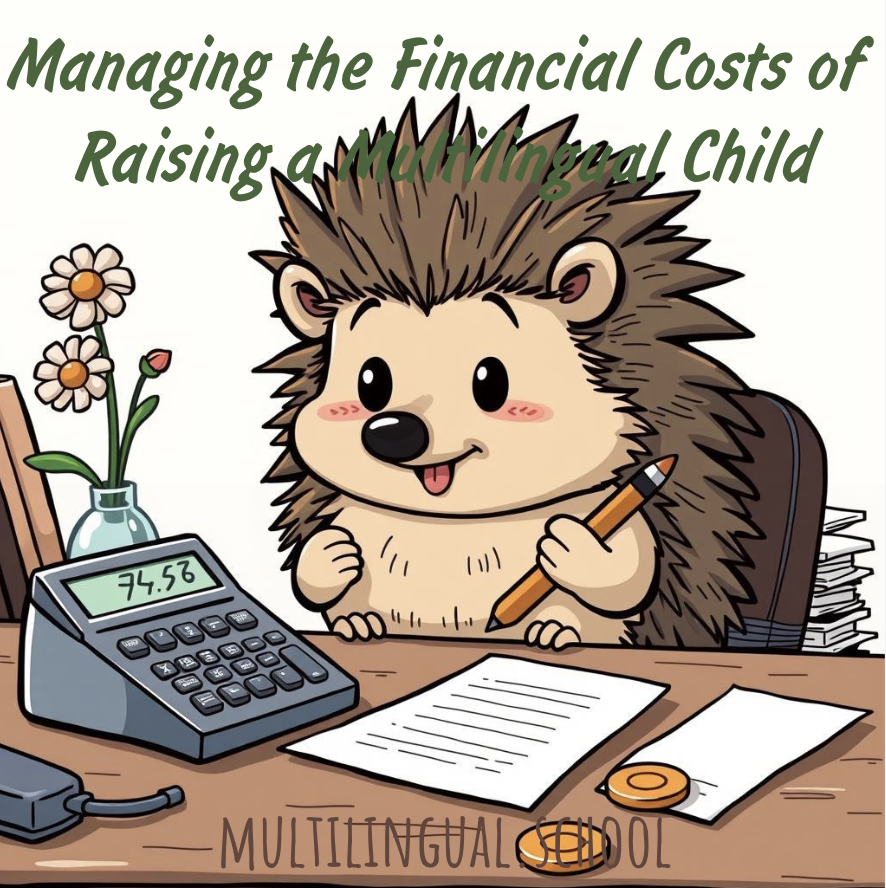How I Set Up My Child to Thrive in Creative Play: Why Multilingual Language Development Blossoms When Children Play Openly and Creatively
This post may contain affiliate links, which means that I may receive a commission if you make a purchase using these links. You do not pay a higher price.
Fostering Creative Language through Imaginative Play
Raising a multilingual child is a journey filled with both rewards and challenges. As parents, we often worry about how to balance multiple languages, ensure fluency, and foster a love for each one. One powerful yet often overlooked tool in this process is creative play. When children engage in open, imaginative play, they naturally experiment with language, making it an ideal setting for multilingual development. In this post, I’ll share how I’ve set up my child to thrive in creative play and why this approach has been a game-changer for their language skills.
The Role of Play in Language Development
Play is a child’s natural way of learning. It’s where they explore, experiment, and make sense of the world—language included. In a multilingual context, play becomes even more crucial because it provides a low-pressure environment for children to practice their languages. Unlike structured lessons or formal practice, play allows them to:
Experiment freely: Children can mix languages, make mistakes, and try new words without fear of correction.
Develop fluency: Through repetition and role-play, they reinforce vocabulary and grammar in a meaningful way.
Build confidence: Success in play translates to confidence in language use, especially when they see their words have impact (e.g., narrating a story or giving instructions to a toy).
Research supports this: studies show that children who engage in imaginative play develop stronger language skills, particularly in vocabulary and narrative ability . For multilingual children, this effect is amplified as they navigate multiple linguistic systems.
How Creative Play Supports Multilingualism
Creative play—think dress-up, building forts, or inventing stories—encourages children to use language in dynamic, flexible ways. Here’s why it’s especially beneficial for multilingual kids:
Language fluidity: In open-ended play, children often switch between languages naturally, depending on the context or the “character” they’re embodying. This mirrors real-life multilingualism, where code-switching is a valuable skill.
Cultural exploration: Play allows children to act out scenarios from different cultures, deepening their connection to each language. For example, a child might play “market” in Spanish or “tea ceremony” in Japanese, embedding cultural nuances into their language use.
Problem-solving across languages: When children encounter a challenge in play (e.g., how to build a bridge with blocks), they might think aloud in one language and explain their solution in another, strengthening cognitive flexibility.
Setting Up an Environment for Creative Play
To maximize the language benefits of play, the environment matters. Here’s how I’ve designed a play space that nurtures multilingualism:
Multilingual materials: Stock the play area with books, puzzles, and toys labeled in different languages. For example, a toy kitchen might have food items labeled in French, Spanish, and English.
Cultural props: Include costumes, dolls, or props that represent the cultures of your family’s languages. A sari for imaginative play in Hindi or a matryoshka doll set for Russian storytelling can spark language use.
Audio resources: Play background music or audiobooks in your target languages. Even passive exposure during play helps reinforce pronunciation and rhythm.
The goal is to create a space where multiple languages feel like a natural part of the play experience, not an add-on.
Specific Play Activities That Enhance Language Skills
Here are some of my favorite activities that blend creative play with multilingual language development:
1. Dramatic Play with Cultural Twists
How it works: Set up a “global village” where each corner represents a different culture. Your child can “visit” each one, using the appropriate language to interact with imaginary characters.
Language benefit: Encourages role-play in multiple languages, building vocabulary and cultural awareness.
2. Multilingual Storytelling
How it works: Start a story in one language, then invite your child to continue it in another. You can use props like story cubes or picture cards to guide the narrative.
Language benefit: Strengthens narrative skills and encourages fluid language switching.
3. Art Projects with Language Prompts
How it works: During art time, ask your child to describe their creation in a specific language. For example, “Tell me about your painting in German.”
Language benefit: Links creativity with language production, reinforcing descriptive vocabulary.
4. Music and Movement
How it works: Play songs in different languages and encourage your child to dance or act out the lyrics. You can also create simple instruments and name them in each language.
Language benefit: Enhances listening skills and pronunciation while making language fun and physical.
These activities are flexible and can be adapted to your child’s age, interests, and language proficiency.
Addressing Challenges in Multilingual Language Development
Even with the best setup, challenges arise. Here’s how to tackle common issues:
One language dominates: If your child leans heavily on one language, make the minority language more appealing through play. For example, introduce a “magic wand” that only works when spoken to in Italian.
Resistance to a language: If your child resists a particular language, try associating it with a favorite activity. Maybe they can play with a beloved toy while speaking French.
Uneven progress: Multilingual development isn’t linear. If your child lags in one language, increase playful exposure—think puppet shows or treasure hunts in that language—without adding pressure.
Remember, patience is key. Play should feel like a joy, not a chore, for both you and your child.
The Long-Term Benefits of This Approach
Investing in creative play for multilingual development pays off in ways that go beyond language:
Cognitive flexibility: Switching between languages during play strengthens the brain’s ability to adapt and problem-solve.
Cultural empathy: By acting out diverse scenarios, children develop a deeper understanding of different cultures.
Lifelong language love: When language is tied to fun and creativity, children are more likely to embrace it as a lifelong skill.
As linguist Dr. Erika Hoff notes, “Play is the work of childhood, and for multilingual children, it’s where language comes alive” .
Final Thoughts: Play Is the Secret Ingredient
Raising a multilingual child doesn’t require rigid schedules or expensive resources. By embracing creative play, you’re giving your child the freedom to explore languages in a way that feels natural and joyful. So, set up that play space, grab some props, and let the multilingual magic unfold - one imaginative adventure at a time.
What’s your favourite way to weave languages into playtime? Share your tips below and let’s inspire each other to raise confident, multilingual kids!













